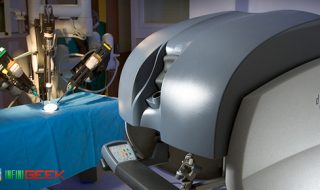
Radiation is a bit of an intimidating word. Most people still imagine mad scientists and evil villains harnessing its power for their own evil schemes, but there’s quite a bit about radiation that gets looked over. We have always been exposed to the natural radiation of the earth and from outer space, so it’s nothing new. It can do some pretty cool things that prove it can be a helpful tool, too.
What is radiation? When you get down to it, radiation is energy. As atoms attempt to keep stable, they let go of excess energy, and in doing so the unstable bit of the atom might emit some extra energy, which is what we call radiation.
Where does it come from? Radiation can come from naturally unstable atoms that exist here on earth in our habitat, our food, or the air, but it also travels through space and enters our atmosphere in varying amounts. It can be manufactured by machines which mankind has developed (artificial radiation) to help them in their scientific studies and to benefit the rest of us.
What is it made of? There are a few different types of radiation, so they’re not all composed of the same particles. This also means that not all radiation is harmful, and those types that are harmful aren’t necessarily harmful in the same way. Some radiation is made up of charged particles from elements like radium, uncharged particles, or electrons.
How does it work? Depending on how energetic it is, radiation can be ionizing (high-frequency waves with lots of energy) or non-ionizing (lower frequency waves with less energy). The higher the frequency, the better its ability to penetrate objects including the layers of our clothes and skin. When working with ionizing radiation, it’s important to protect yourself with the proper protective equipment.
A Quick Historic Summary
The Most Radioactive Places on Earth
We didn’t know much about radiation until the initial discovery of x-rays in 1895 by Wilhelm Konrad Roentgen, but Marie Curie and her husband weren’t far behind with their discovery of radioactivity in uranium.
More rays were identified in a rush over the next few years, and in 1911 reports linking x-rays to cancer started coming in. Not long after, Hans Geiger presented his invention to detect radiation (the Geiger-counter, anyone?). While so many discoveries were being made, there were many lessons learned about the dangers of exposure to radiation, resulting in radiation-induced diseases and deaths.
Around the same time that radiation was being introduced to the medical field, development of the atomic bomb began, showing that both the beneficial and destructive aspects of radiation could be explored simultaneously.
Modern Advantages

Mars: First Radiation Measurements from Planet’s Surface
While we’re no longer afraid of falling into a vat of toxic material and becoming a comic book superhero, radiation has expanded into many fields where we benefit from it today.
Professionals that utilize radiation and its study in their work field include radiation oncologists, radiologists, paleontologists that radiocarbon date fossils, and astronomers and astrophysicists that measure radiation and perform experiments in the name of space exploration.
It can still be found in our everyday lives as well. Besides fighting cancer cells, radiation can be found in ultraviolet light from the sun, x-ray machines, sound waves, radio waves, heat from your stove, and even candlelight. Most of your daily exposure isn’t dangerous, but you should try to limit or protect yourself from exposure to too much, like using sunscreen when outside for long periods.




